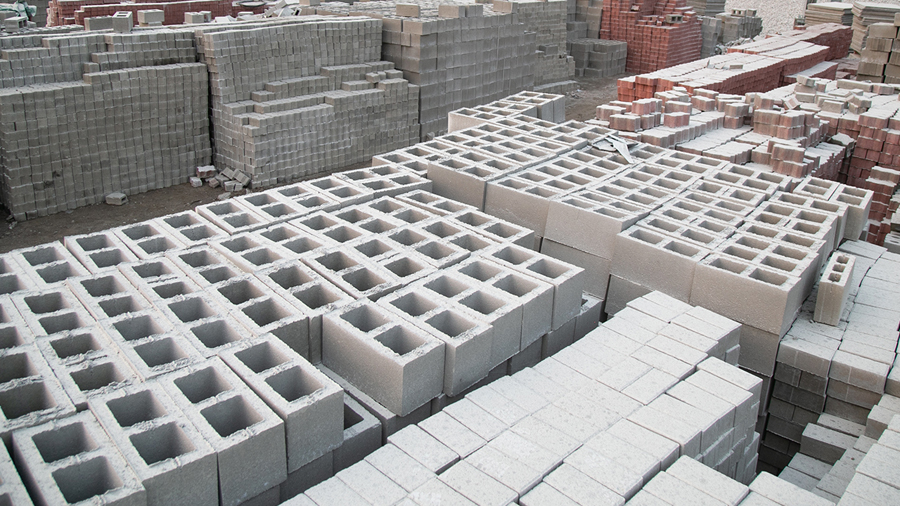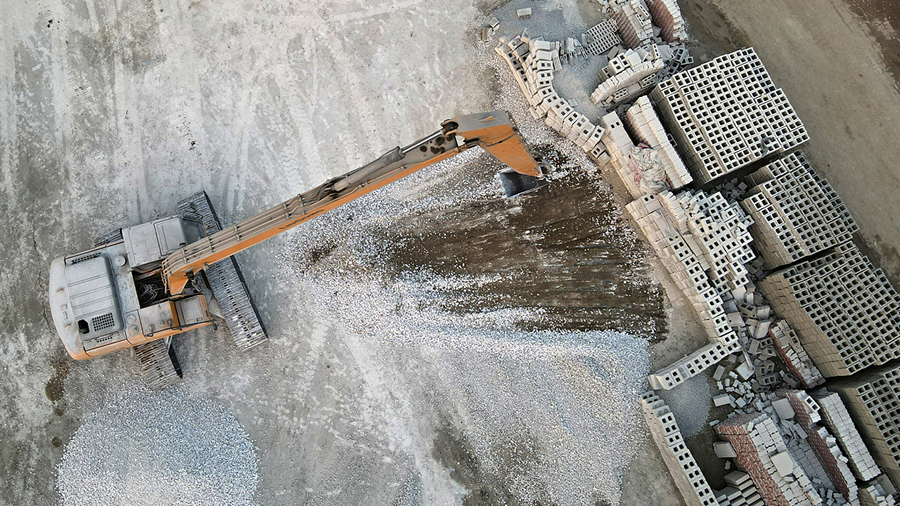
Concrete blocks
The eco-friendly solution that Bangladesh's construction industry needs for sustainable development
Saturday, 31 December 2022
The process of making clay bricks that dominate the country's construction industry is severely harming the environment and threatening food security of the future generations. So, finding a viable alternative to the widespread use of bricks for building various structures in a growing economy like Bangladesh has been essential.

The government has aimed to stop use of clay bricks by 2025, a target which looks unlikely to be attained, given the high level of market penetration of these bricks and lack of awareness about the environment-friendly but cheaper construction materials that can save money and stop degrading natural environment. We need to understand the proven harmful effects of clay bricks and benefits of the alternative to it.
Clay bricks are burned in brick kilns, which spew poisonous fumes and toxic gases that harm the environment and people living around it. Airborne particulates and metal traces coming out of brick kilns are linked with serious health issues, primarily respiratory disease, lung cancer, heart disease, and damage to other organs. The pollutants from there affect farming in the adjacent area.
Around 7,000 brick kilns consume over 1.27 billion cubic feet of topsoil, according to Bangladesh Brick Manufacturing Owners' Association. Topsoil depletion has now reached an alarming state for Bangladesh's agriculture.
Unfortunately, due to a lack of knowledge about the long-term detrimental effect, farmers sell their topsoil for making quick money. It takes about 15-20 years for the ground to gain the nutrition it loses when the topsoil is removed. Topsoil has the highest concentration of organic matter and microorganisms.
Already, organic matter in cultivable land in Bangladesh has come down to 1.0 per cent, as against the minimum requirement of 3.0 per cent, says Dr. Md. Golam Kibria, professor of the Soil Science Department at Chittagong University. Bangladesh is also losing farmland at a rate of 1.0 per cent a year due to urbanisation, industrialisation and construction of infrastructures.
However, eco-friendly building materials can be beneficial in the long run for all stakeholders including the farmers and for the ecology. They can also help conserve natural resources, especially fertile topspoilrequired for food production. Thus, concrete blocks are one of the best choices when making eco-friendly decisions. Manufacturing these blocks does not require use of topsoil, let alone burning it and emitting carbon.
Research shows, the level of salinity in the blocks ranges from 5.0 per cent to 7.0 per cent whereas clay bricks have a salinity of 30-40 per cent. On the other hand, the water absorption capacity of concrete blocks is around 5-10 per cent while clay bricks absorb water by more than 30 per cent. Therefore, concrete blocks are more sustainable and last longer; most raw materials used to manufacture them are local.

These blocks can endure fires and intense heat without losing their shape. Recovered concrete blocks can also be easily recycled and repaired. Its production process doesn't cause environmental pollution and wastage of natural resources.
Human's use of concrete blocks can be dated back to Pharaohs in ancient Egypt. They are again gaining spotlights when people are becoming concerned about global warming and looking for environmental-friendly products.
Concrete blocks are likely to dominate Bangladesh's construction industry by 2030, according to projection of MIR Group, one of the industrial conglomerates of the country.
Concrete blocks can decrease construction costs by 25-40 per cent, shows the estimate by the Housing and Building Research Institute (HBRI). The Ministry of Environment, Forest, and Climate Change has stated that the government would use 100 per cent environmentally friendly blocks in public construction projects.
The demand for concrete blocks is steadily rising, but more awareness needs to be created nationwide by both the public and the private sectors. It's been years since the government took the initiative of banning the usage of clay bricks; however, the process has been slow because most people need to be aware of how clay bricks harm the environment and people.
Also, sustainable lifestyles won't matter much if our buildings or apartments are made with non-eco-friendly materials. Therefore, Bangladesh must take essential steps to adopt eco-friendly processes and switch from clay bricks to concrete blocks to save the nation's environment and population from catastrophic consequences.
Sakhawat Hossain, Head of Sales at Mir Concrete Products Ltd